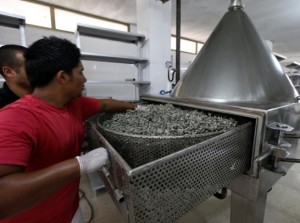 Although there is a wealth of literature on migration, little has been published on the return of migrants to their country of origin. The Euro-Mediterranean Forum of Economic Institutes (FEMISE) reports that return migration has an impact on employment, entrepreneurship and investment.
Although there is a wealth of literature on migration, little has been published on the return of migrants to their country of origin. The Euro-Mediterranean Forum of Economic Institutes (FEMISE) reports that return migration has an impact on employment, entrepreneurship and investment.
When migrants return to their country of origin they generate wealth, invest and create employment. In the FEM34-20 study, entitled “Return Migration in south Mediterranean countries”, Femise analyses this phenomenon in Morocco and Egypt.
In 2013, 12 million people from these nations were living abroad. Where do they go? Egyptians mainly migrate to Gulf and OECD countries while Moroccans, similarly to their Algerian and Tunisian neighbours, prefer to migrate to Europe.
Morocco’s diaspora stood at 4.5 million people in 2013, with the majority of migrants living in Europe. After Turkey, Morocco has the second largest population of migrants to Europe from a non-European country. It could well surpass Turkey in the number of migrants to Europe in the next ten years.
ADMINISTRATIVE DIFFICULTIES UPON RETURN
The aspiration for a better life constitutes the main motivation to migrate. And, contrary to popular belief : “82% of Moroccan migrants already have a job”. They simply want a higher salary.
The education level of Egyptian migrants is higher than that of Moroccan migrants. The latter have a tendency to remain in the destination country for the rest of their lives while Egyptians prefer to migrate on a temporary basis and return either to their country of origin or to another Gulf country.
Most migrants leave their country of origin at ages 15 and 29 years. It is at 44 that they decide to return, bringing with them new knowledge and skills which they will be able to build upon on their return.
Some migrants become business leaders (entrepreneurs) and play a vital role in job creation. Hence there is a need to maximise the potential benefits for the country of origin. “We show the impact of return migration on the accumulation of human capital and entrepreneurship, and the role played by return migration policy”, explains Jackline Wahba, professor of Economics at the University of Southampton and leader of the report.
Nevertheless, returning of migrants proves to be complicated from an administrative point of view, in particular when it comes to transferring pensions and social security contributions.
Moreover as a result of the global economic crisis, European countries have had a tendency to tighten up their immigration policy, the report predicts that low birth rates and ageing populations in Europe could lead to a significant increase in the number of temporary migrants. The numbers are expected to rise to 4.9 million by 2015 and 11.8 million by 2020.
Read the entire report FEM34-20
Photo CC-EU Neighbourhood Info Centre
Article par Nathalie Bureau du Colombier, Econostrum. www.econostrum.info.
Enregistrez-vous pour le newsletter Econostrum:http://www.econostrum.info/subscription/

